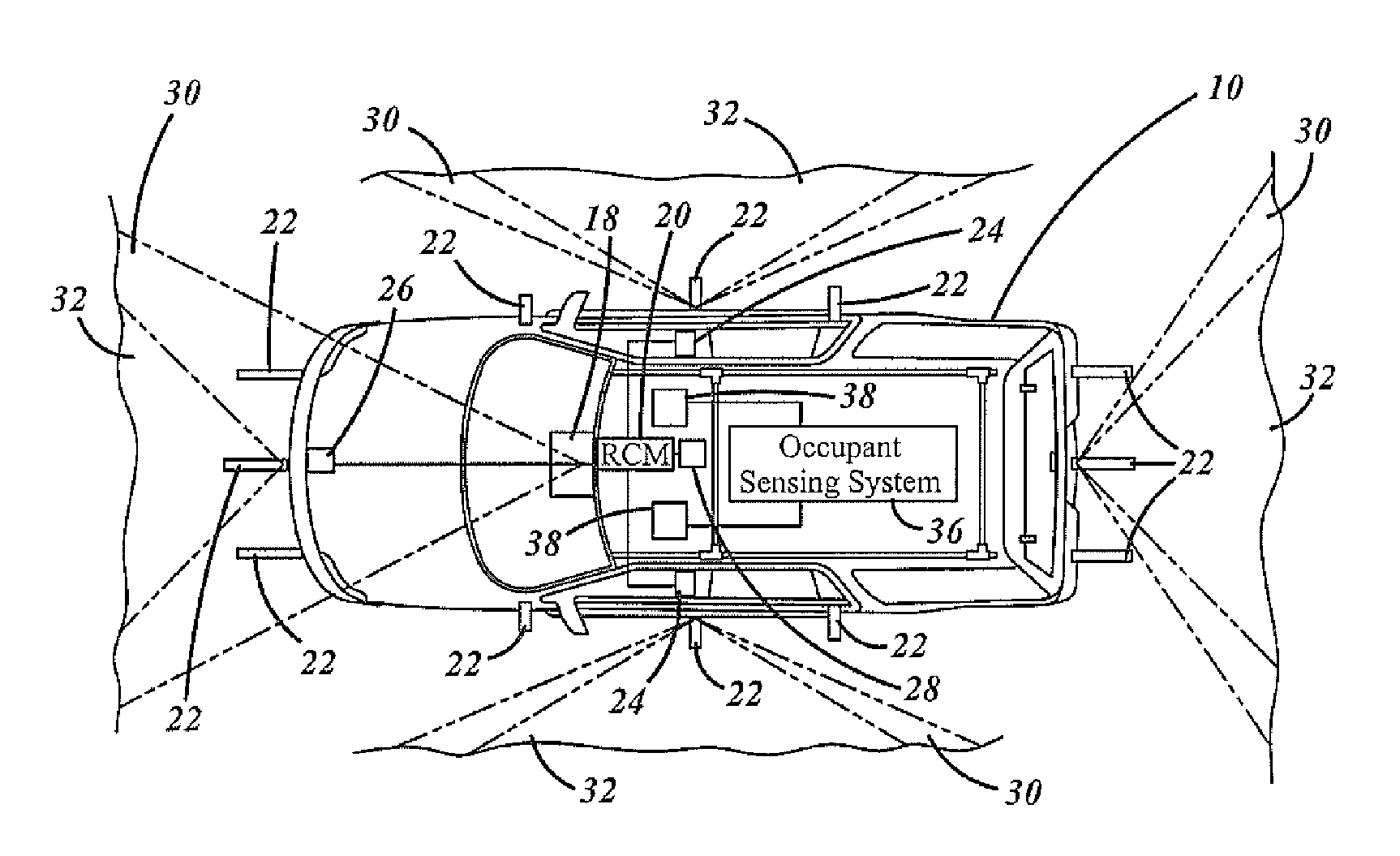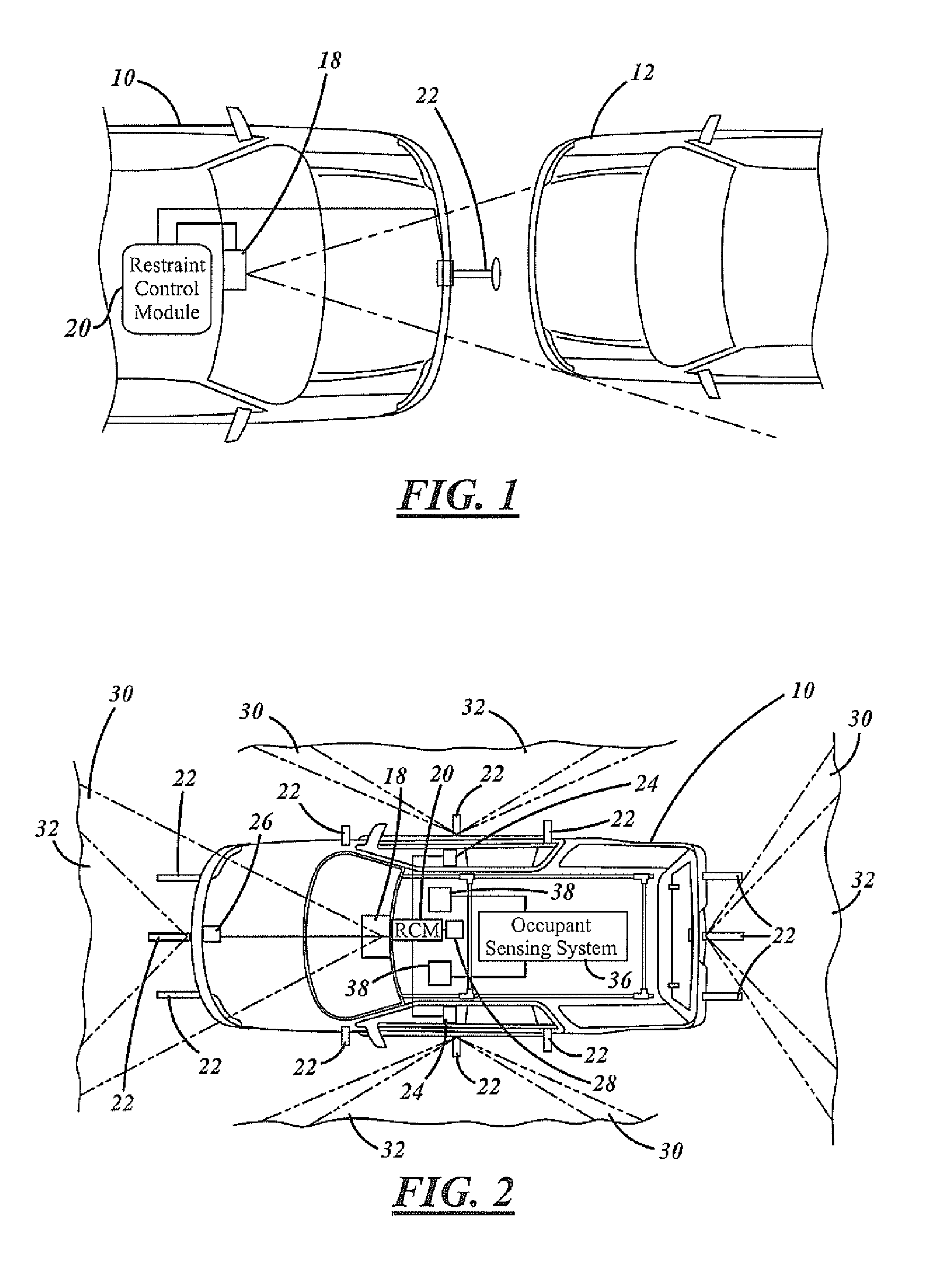Method for operating a pre-crash sensing system with protruding contact sensor
a contact sensor and pre-crash sensing technology, applied in the direction of pedestrian/occupant safety arrangements, instruments, etc., can solve the problems of high hardware and algorithm complexity of pre-crash sensing systems that exist today, radar, vision and laser systems are not capable, and high reliability has not yet been achieved. , to achieve the effect of reducing false activation, reducing processing power required, and high reliability
- Summary
- Abstract
- Description
- Claims
- Application Information
AI Technical Summary
Benefits of technology
Problems solved by technology
Method used
Image
Examples
Embodiment Construction
[0019] In the following figures the same reference numerals will be used to identify the same components. While the present invention is illustrated with respect to several types of pre-crash sensors, various types and combinations of pre-crash sensors may be used as will be further described below.
[0020] Referring now to FIG. 1, a host vehicle 10 is illustrated with respect to a crash object such as an another vehicle 12. The host vehicle 10 includes an object or pre-crash sensor 18 that is coupled to an airbag or other restraint control module (RCM) 20. In addition, a mechanical contact sensor 22 is shown protruding from the front of the vehicle. In response to the pre-crash sensor 18 and the mechanical pre-crash sensor 22, the RCM 20 activates an airbag within the vehicle as will be further described below.
[0021] Referring now to FIG. 2, the host vehicle 10 is illustrated in further detail. The host vehicle 10 is shown having the restraint or airbag control module, RCM, 20 ther...
PUM
 Login to View More
Login to View More Abstract
Description
Claims
Application Information
 Login to View More
Login to View More - R&D
- Intellectual Property
- Life Sciences
- Materials
- Tech Scout
- Unparalleled Data Quality
- Higher Quality Content
- 60% Fewer Hallucinations
Browse by: Latest US Patents, China's latest patents, Technical Efficacy Thesaurus, Application Domain, Technology Topic, Popular Technical Reports.
© 2025 PatSnap. All rights reserved.Legal|Privacy policy|Modern Slavery Act Transparency Statement|Sitemap|About US| Contact US: help@patsnap.com



